Can you remember the last time you ate dinner at a fancy restaurant?
Okay, it could be any kind of restaurant, but the routine is usually the same. I bet you sat down, grabbed the menu, checked prices, and placed your order, right?
Good.
Now, as a drop-off caterer, let me ask you a question.
Do you think that menu’s only purpose was to communicate prices? Well, it wasn’t. Menus serve a bigger purpose.
In “The Ten Commandments for Menu Success,” an article published in the Restaurant Hospitality Magazine by restaurant consultant, Allen H. Kelson, described menus excellently.
He said:
“A good menu works like a map, allowing easy navigation between hunger and satisfaction. If it’s properly conceived, it leads customers along the path you want them to take, steering them to your most profitable or distinctive items.”
In other words, menus are a great marketing tool restaurants leverage to generate revenue. Now, another question is, do menus matter as much to drop-off catering as they do to restaurants?
Of course, they do.
Your catering menu design should be your best marketing asset. And that’s because if it’s not inviting, no one will care about your food.
No one wants that.
So in this article, I’ll go through how to create catering menu designs your prospects can’t help but salivate about your food. There’s also a free catering menu design template you can customize to your needs as you follow along.
[Download our Catering Menu Design Template. Click “File” → “Make a Copy” to duplicate the template]
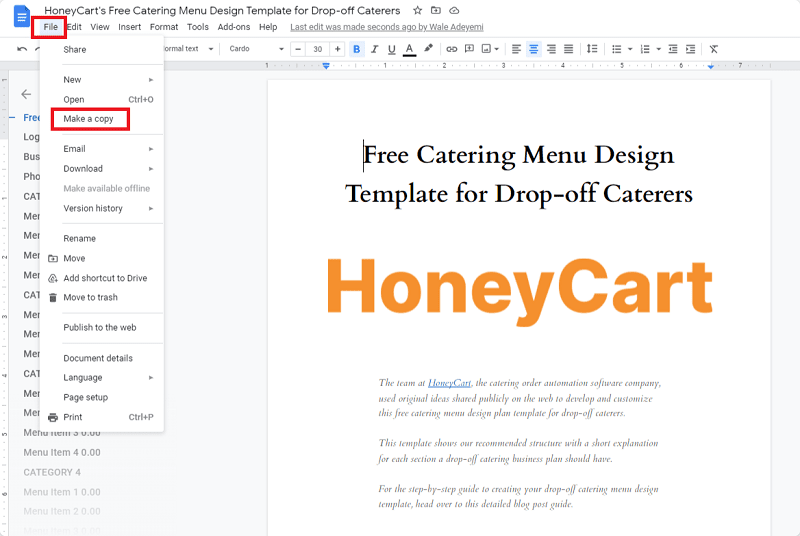
Before we proceed…
An Easier Way to Create and Manage Catering Menus
How do you create and manage your menus?
Let’s say I wanted to order food from you. Are you the type of caterer who sends out a list of what’s available each time potential customers reach out on Instagram, Facebook, etc.,?
You shouldn’t.
Such a process isn’t just stressful, but it’s time-consuming and disorganized.
What’s more?
Even your potential customers won’t find it convenient.
Now, what if you could easily point anyone, from anywhere, to your catering menu? And what if your menus were easily accessible to customers across mobile, web, or social media?
That’s where a catering menu manager like HoneyCart comes in:
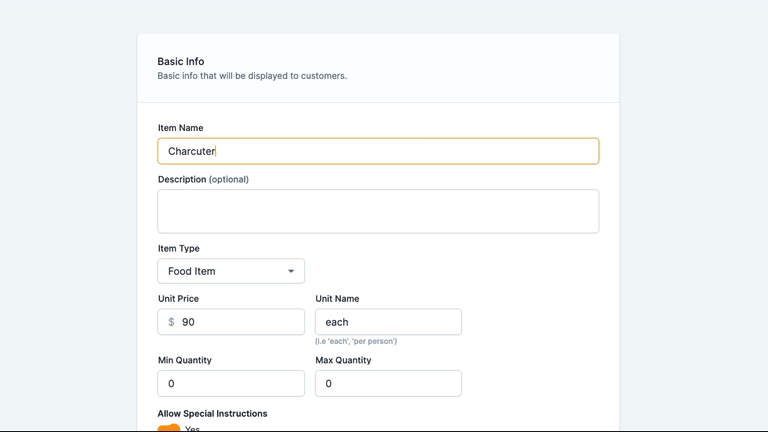
With HoneyCart, you can create and bring all your menu items under one roof. It makes the entire ordering process more organized and helps you plan meals effectively.
What’s more?
Share the link anywhere you like and your customers can always jump in to place orders based on your pre-set policies. With this, you only worry about other important aspects of your business.
Take Elizabeth Choto of Grazedat Catering, for instance.
She creates and manages several of her menus with HoneyCart with ease. As a drop-off caterer without a team, she needed all the time in the world to take care of other vital aspects of her business.
HoneyCart helps her to do just that. In her words:
“HoneyCart made it super easy for me to build an online menu that was easy for customers to navigate and customize their orders and freeing up valuable time on my end for me to tackle other tasks.”
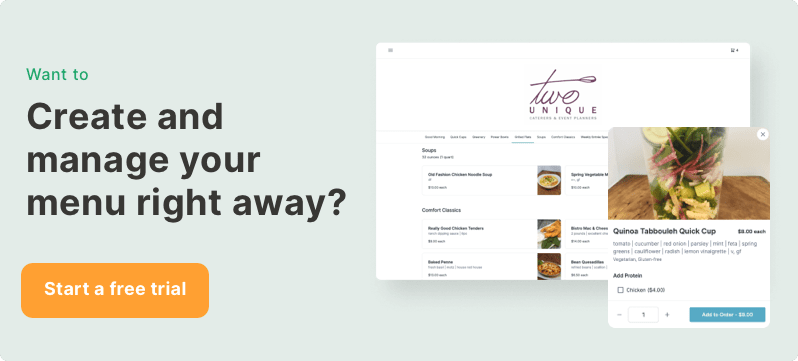
The Importance of Catering Menu to Drop-Off Caterers
Gone are the days when menus were meant only for restaurants. Now, as Michael Rosman, owner of The Corporate Caterer, mentioned in this article:
“A solid starting point for any drop-off catering is creating a great menu.”
I couldn’t agree more.
A catering menu is a great way to stand out from your competitors. It’s also a reflection of your entire catering business.
The truth is, potential customers can easily get discouraged from buying if your menu is nothing to write home about. Even in catering, first impressions matter a lot.
But first impressions, through excellent menu designs, are one thing most drop-off caterers take for granted. They pay no attention to creating a visually appealing menu, thinking it doesn’t matter.
And I bet you’ve heard the saying:
“People eat with their eyes.”
For this reason, you must create an attractive, mouth-watering catering menu that wets your customers’ appetites, getting them to crave your offerings.
And how do you do this?
How to Create Your Catering Menu Design Template
Now, let’s go over how to create a catering menu design.
If you already have a physical menu template, you can use it as a guide to creating your online menu template.
But to follow along as I walk you step-by-step, download our sample catering menu template. Don’t worry, you can customize it to your needs:
Logo/Business Name
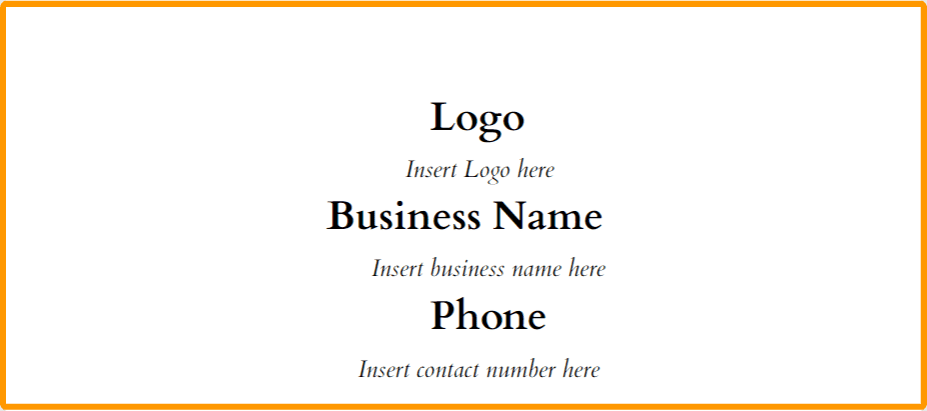
Remember, I mentioned earlier that your menu is a reflection of your business. As such, the first thing you should add to your menu is your logo.
Because a logo reinforces your brand identity, helps customers recognize your brand, builds an emotional connection, and makes them feel more comfortable buying from you.
Think of McDonald’s, KFC, or Dominos Pizza. They all have distinct logos you can instantly remember whenever you see them.
Also, research shows that 50% of consumers are more likely to patronize a brand with a logo that they recognize. This emphasizes how important having a logo is.
But if you don’t have a logo, you can use your business name pending the time you get one.
Categories
Another thing you should add to your menu is categories. These are headlines or titles of your menu items.
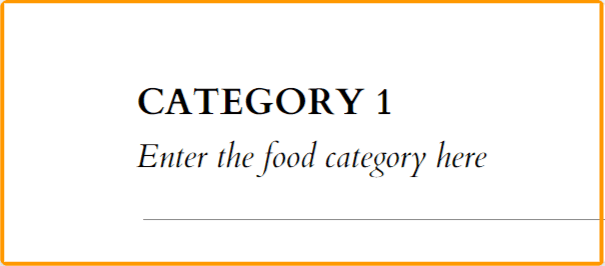
They are used to categorize similar dishes into different groups, so your customers don’t have to search too much before finding their preferred dish.
For example, you can have a static food category with appetizers, salads, specific cultures (like South Asian or Italian Cuisines), or food type (Grazing platters, southern cooking, vegetarian).
Menu Items
These are the names of your dishes. For best practices, they should be self-explanatory, so customers know what the dish is about even without reading the description.
Also, they should have mouthwatering names to entice your customers to place their orders.
For example:
Instead of Mushroom Soup, you can make it more enticing by saying:
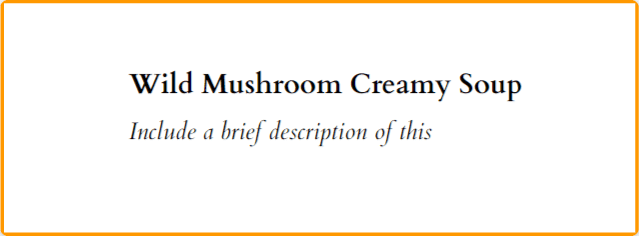
You get the idea, right?
You can also add locations to your menu items to make them sound more intriguing, unique, and expensive. You’d be surprised by how many customers would pay a premium for locally sourced ingredients.
For example:
Instead of “Soy Marinated Beef,” you can say “Japanese Soy Marinated Beef.”
But don’t just use random locations for the fun of it. Ensure one or more ingredients can be traced to specific locations to avoid backlash from well-traveled clients.
Descriptions
Have you ever chosen a specific dish simply because of its description? You are not alone.
According to a 2019 study, menu description triggers 45% of the buying decisions for a specific dish.
And the reason isn’t far-fetched.
Your description is an opportunity to expand more on the dish, include trigger words, add local languages and share the list of ingredients used. All these are simple ways to make the dish more enticing to your customers.
California-based menu engineer consultant Gregg Rapp agrees to this:
According to Rapp:
“Instead of saying ‘lemon chicken,’ tell a little about the lemon.”
Here’s an example of how to write a proper description:
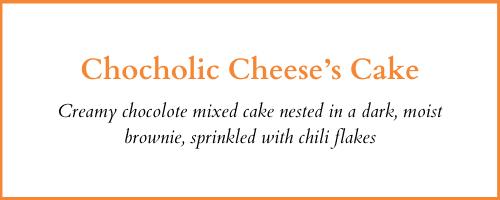
Does this sound like something you want to taste?
I bet it does.
That’s the power of writing a description that makes each dish unique and savory.
Pro Tip: don’t make the description too long. Avoid using jargon, over-complicated words, or languages your customers won’t understand. Keep it short, sweet, and straightforward.
Pricing
Another critical part of a menu design most drop-off caterers leave out is the price.
Pricing plays an essential part in whether customers choose a dish or not. So you shouldn’t leave out the price on your menu.
Here are few tips for pricing your menu items:
- Arrange your offerings by popularity and profitability.
- Delete any $$ signs from the menu. According to Neuromarketing research, customers spend twice as much when they see just a number compared to when there’s a currency sign.
- Research reveals adding cents next to your prices communicates value. Studies also show ending your price with “.99” is better than “.00”. For example, listing an item for 21.99 is better than 20.00.
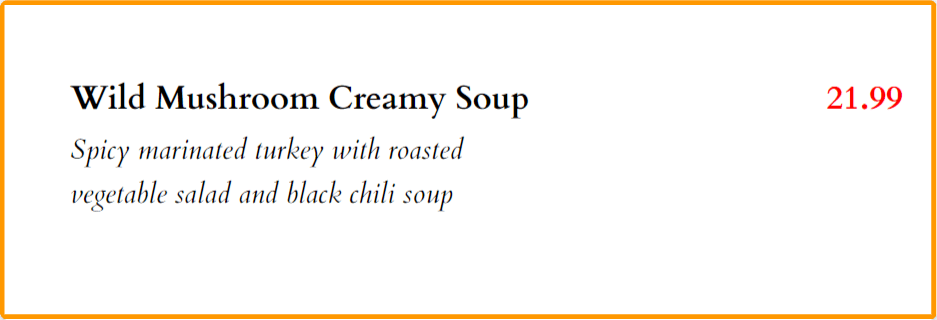
Conclusion: Create and Manage Your Catering Menu With HoneyCart
Whether you choose to build a menu from scratch or use a template, the bottom line is: A catering menu must be part of your business plan.
However, it may be time-consuming and stressful to make swift, company-wide changes to your menu especially if it changes from time to time.
So, how do you solve this problem?
That’s where HoneyCart comes in.
HoneyCart allows you to create and make changes to your menu items with just a few clicks.
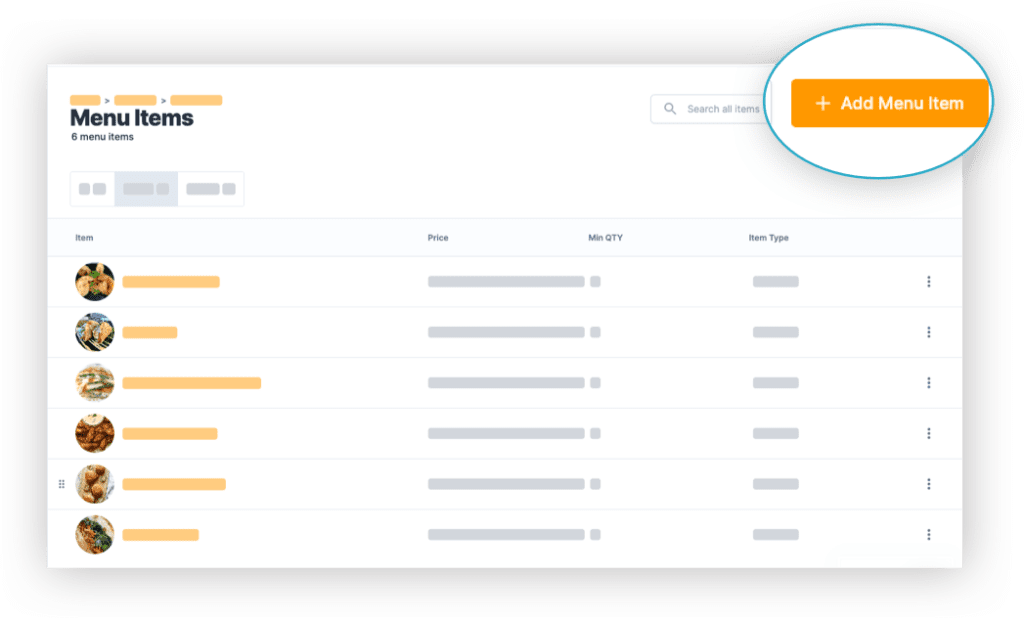
The best part?
You don’t need anyone (support or developer) to do it for you.
Just like Linda Estrada of MyTacoGuy found out when she started using HoneyCart.
According to Linda:
“I love how I can make instant changes and updates to my menus without having to email someone to do it and waiting for days. I’m 100% in charge of my menu, my prices, and order volume.”
Also, customers now favor convenience over price or quality. So it’s essential to ensure they can conveniently go through your menu and place their orders without any hassles.
Again, Linda found this feature appealing.
In her words:
“Now I’m spending less time processing orders, and customers love how easy it is to place an order. No more back and forth via email. They simply go to our website, browse the menu and place their order– I receive, confirm and print. DONE!”
Another benefit of using HoneyCart to manage your menu is being able to add pictures of your dishes.
According to a study carried out by the International Journal of Hospitality Management, adding pictures positively affects consumers’ attitudes toward the menu item, their willingness to pay, and their purchase intentions.
Adding images to a template will make it look jampacked and hard to read.
But with HoneyCart, you can easily upload images of your dishes to your menu with a touch of your brand to further entice your customers.
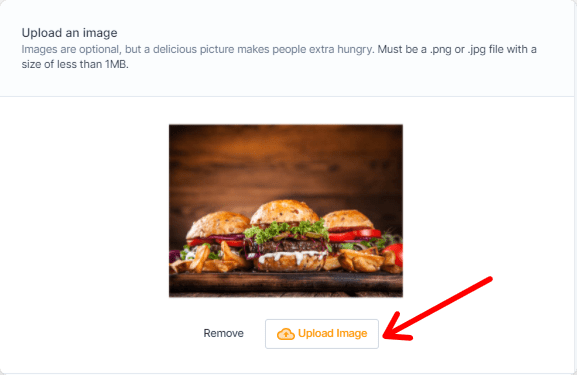
Furthermore, you can even hide and unhide menus to conveniently manage seasonal menus to drive revenue with rotating menus easily reused. So you don’t always have to edit every time.
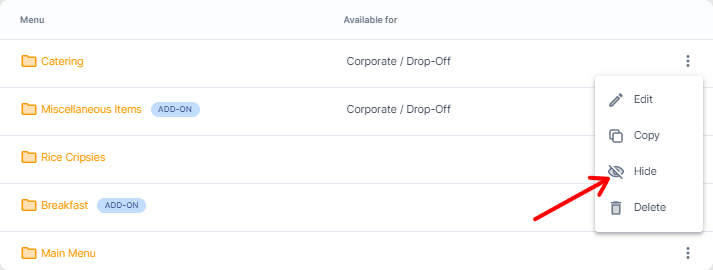
A feature Katie Reinberg, owner of Wined and Dined Catering Company, found very helpful.
In her words:
“I no longer have to manually invoice clients. Very easy to upload and store and reuse menu items, and the client-facing side is very user-friendly for their orders.”
So, if you would like to save more time creating menus, then start your free 14-day trial to discover how HoneyCart can help you achieve this.

